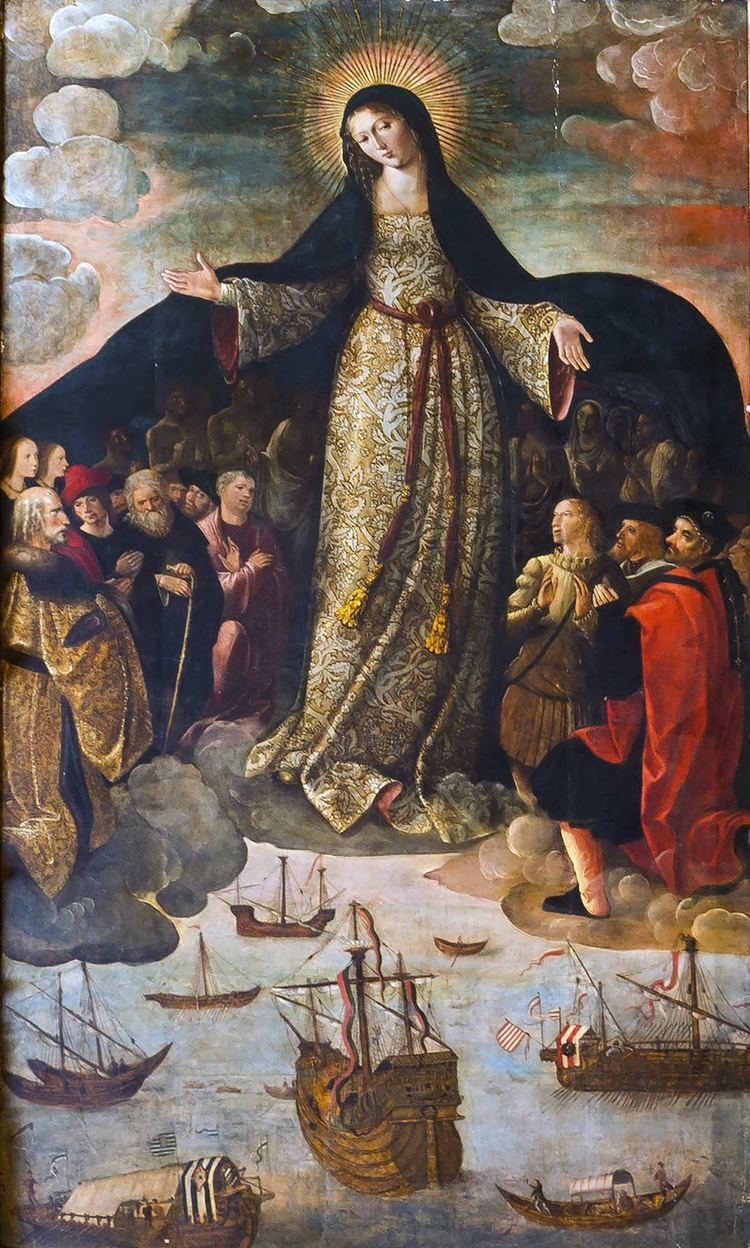Artist Alejo Fernández | ||
 | ||
Similar Auto de Fe presidido por Santo, Tumba de Cristóbal Colón, Sepulcro de los Reyes Ca, Madonna of humility, Polyptych of the Misericordia | ||
The Virgin of the Navigators (Spanish: La Virgen de los Navegantes) is a painting by Spanish artist Alejo Fernández, created as the central panel of an altarpiece for the chapel of the Casa de Contratación building in Seville, southern Spain. It is the earliest known painting whose subject is the discovery of the Americas.
Contents
The painting is a version of the common iconography of the Virgin of Mercy, in which the Virgin Mary protects the faithful under the folds of her mantel, best known from the 1445 painting The Madonna of Mercy by Piero della Francesca. In this the Virgin Mary is always the largest figure in the picture, towering above those being protected.
Sometime before 1536, officials at the Casa de Contratación commissioned the painting as the central panel of an altarpiece that they installed in the Hall of Audiences, so that the room could also serve as a chapel. Scholars date the painting to 1531–36.
Background
By the Age of Exploration, with the growth of Mariology, Catholics throughout Europe had started to see the Virgin Mary as the symbol of motherhood and of all that was good, gentle and merciful. These sentiments were reflected in Marian art from that period (see History of Mariology).
European navigators, especially the Portuguese, praying for a safe return to their homes, carried this sentiment to South America, where it resulted in churches dedicated to Our Lady of Navigators.
Description
In The Virgin of the Navigators Mary is depicted spreading her mantle over the Spanish. She straddles the seas, uniting the continents, or hovers over the harbor to protect ships, cargo and crew as they embark on the perilous Atlantic crossing.
Ferdinand II of Aragon and the emperor Charles V (cloaked in red), are portrayed together with Christopher Columbus, Amerigo Vespucci and one of the Pinzón Brothers, shown kneeling. All soar on clouds above the water beneath the Virgin's feet. By coincidence another reputed portrait of Vespucci, as a child, is in another Virgin of Mercy which his family commissioned from Domenico Ghirlandaio as a fresco in a church in Florence.
Around the Virgin gather figures of indigenous peoples of the Americas, converted from their original faiths by the navigators who have set sail in her name: the painting "may be the fullest statement of the approved Spanish ideology, which might be called "the White Legend of Spain's Imperial Election".
Flanking the Virgin are panels depicting St. Sebastian, St. James the Great, St. Elmo, and St. John the Evangelist. These panels are thought to be the work of someone other than Alejo, perhaps a member of his workshop or another known artist.
